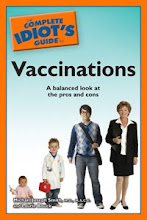I thought it was a truck going by, but that's what I always think when the little earthquakes strike. It took me a moment to realize what it might be. It was near the end of the work day for me, but my laptop was still on, so I logged on to the U.S. Geological Survey site to find out that it was a magnitude 3.3 earthquake near Oakland, CA yesterday. I was far enough away that I barely felt it.
I reported it on the USGS "Did You Feel It?" page, adding my data to everyone else's, not just because I've been studying statistics lately but because it's exciting to make even a small contribution to science. I showed a printout of responses to my children later and they were interested, too; one of them had felt the earthquake, the other had not.
The USGS site shows math and science in action, data gathered and maps produced for the public good. It's much more interesting to see concepts applied than to, say, memorize the times table. Science that you can feel, hear, and touch is fun to learn, and Americans definitely need to learn more science (perhaps starting with Republican presidential candidate Michele Bachmann and her misguided comments on HPV vaccination).
I wanted to thank the USGS for making science fun and relevant yesterday. Did I feel it? Yes - surprise and excitement and a twinge of worry as the earthquake passed through and I looked up its magnitude online. Did my kids feel it? Yes - surprise and excitement as they realized that science had just rattled their world a little.
Friday, September 30, 2011
Monday, September 26, 2011
Should Smokers Be Banned from Hospital Jobs?
Texas' Baylor Health Care joined the Cleveland Clinic and other hospitals in banning smokers from hospital jobs, Fierce Healthcare reported today. As Alice Wolke of My FOX Houston explained in an article about Baylor Health Care's decision, "on the company's Careers page, the rules are laid out:
- Applicants who admit to nicotine use will not have their applications processed
- Anyone who is hired will be tested for nicotine
- If you test positive, your job offer will be withdrawn
- After a positive result, you can reapply for the job after 90 days"
By enforcing this policy, Baylor might be setting a healthy example for patients at its hospitals. To be ruthlessly practical, barring smokers from employment also saves the hospital system a lot of money in employee health care costs. The CDC's Vital Signs public heath site is featuring adult smoking statistics this month, and the numbers are statistics they quote are disturbing: the 19.3% of American adults who smoke (as of 2010) create $96 billion yearly in medical costs.
Barring employment to people with certain medical risks or conditions, however, sets a disturbing precedent. Some people argue that these methods are intrusive of medical privacy, especially considering the high levels of chronic disease and other health problems in America. Others point out a certain hypocrisy in targeting employees who smoke while ignoring those who drink heavily or make other risky health choices when they are not at work.
This month, the Department of Health and Human Services is taking a less punitive approach to better health, launching the "Million Hearts" Initiative to prevent one million strokes and heart attacks between now and 2016. Focusing on "proven, effective, inexpensive interventions" that can prevent heart disease and stroke, the initiative includes many stop-smoking measures, such as:
This month, the Department of Health and Human Services is taking a less punitive approach to better health, launching the "Million Hearts" Initiative to prevent one million strokes and heart attacks between now and 2016. Focusing on "proven, effective, inexpensive interventions" that can prevent heart disease and stroke, the initiative includes many stop-smoking measures, such as:
- Providing Medicare funding for stop-smoking medications
- Funding mass media anti-smoking campaigns
- Creating smoke-free (not smoker-free) workplaces
- Possibly reimbursing health care providers better for preventative care such as stop-smoking counseling.
Friday, September 9, 2011
Rethinking Children's Hospital Ratings
A study published recently in Pediatrics cited the "statistical uncertainty" of using mortality rates in children's hospitals to rank their quality. The study of approximately 473,000 U.S. patients discharged from children's hospitals in 2008 found that adjusted mortality rates at the 42 hospitals studied did not vary much by the hospital's ranking ("Statistical Uncertainty of Mortality Rates and Rankings for Children's Hospitals").
In a cogent Reuters article on the topic, Frederik Joelving points out that death rates, " which carry heavy weight in commercial rankings like the U.S. News & World Report Best Hospitals, are mostly indistinguishable from a statistical point of view" ("Hospital ratings for kids a roll of the dice: study").
Dr. Chris Feudtner, lead author on the Pediatrics article, told Reuters that when patients look for a hospital, along with rankings they should also consider other issues, such as its proximity to their home. Statistics seem to promise clear answers to complicated questions, but sometimes they can't deliver that.
In a cogent Reuters article on the topic, Frederik Joelving points out that death rates, " which carry heavy weight in commercial rankings like the U.S. News & World Report Best Hospitals, are mostly indistinguishable from a statistical point of view" ("Hospital ratings for kids a roll of the dice: study").
Dr. Chris Feudtner, lead author on the Pediatrics article, told Reuters that when patients look for a hospital, along with rankings they should also consider other issues, such as its proximity to their home. Statistics seem to promise clear answers to complicated questions, but sometimes they can't deliver that.
Subscribe to:
Posts (Atom)



